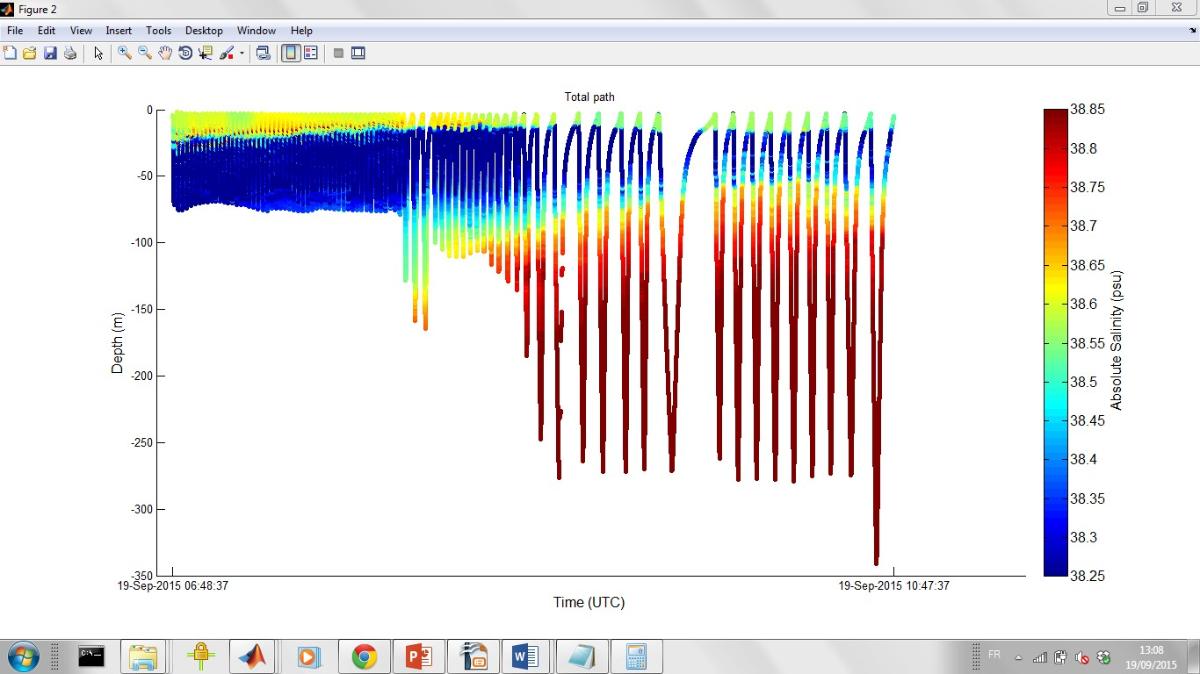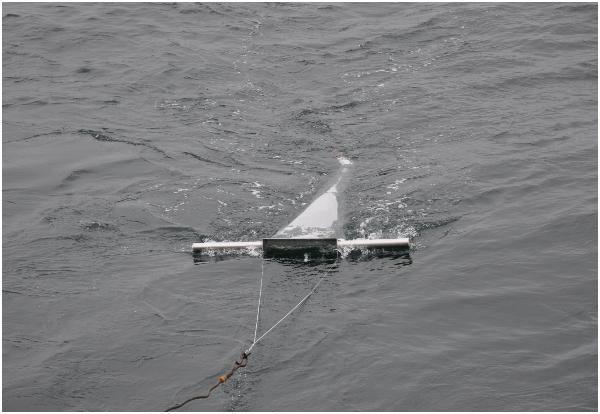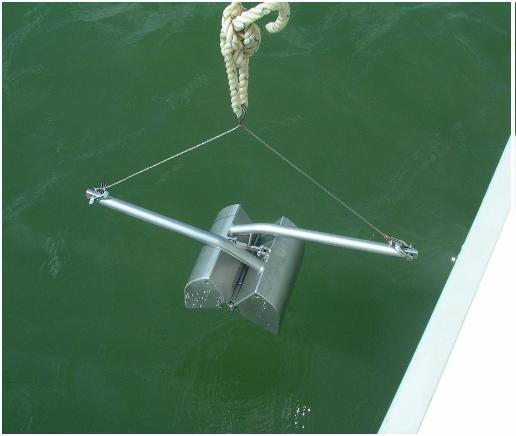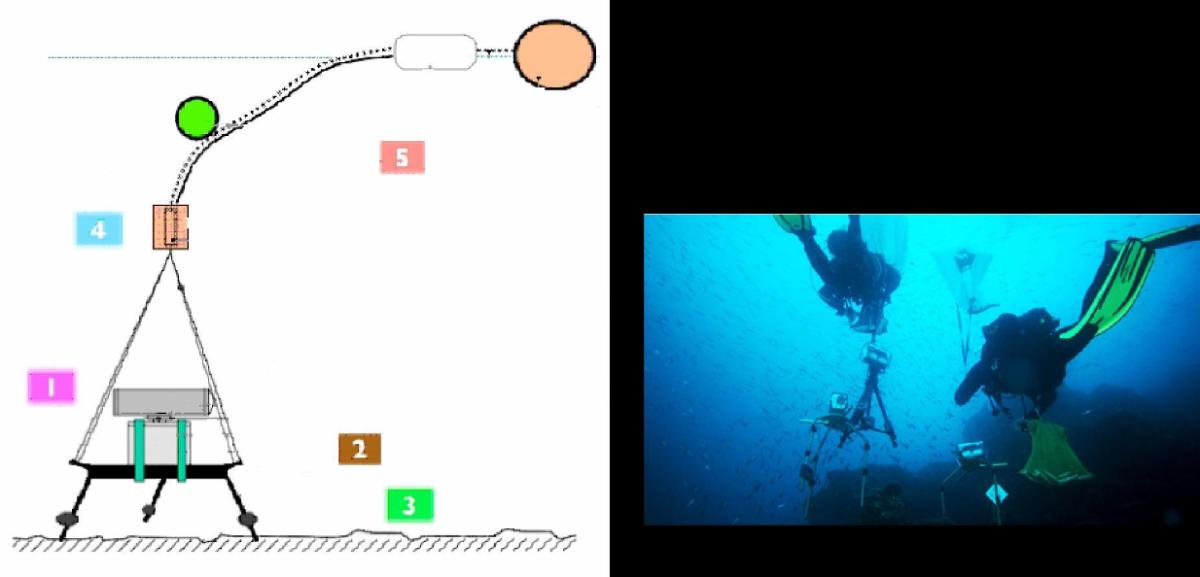Organised along a North-South transect in the Thyrenian Sea, from Liguria to Pantaleria, this campaign enabled a large amount of data to be acquired thanks to the active contribution of the various project partners.
The data obtained on phytoplankton populations show a greater abundance and diversity at stations located to the south, but with abundances up to a thousand times lower than those observed on the continental coast of France.
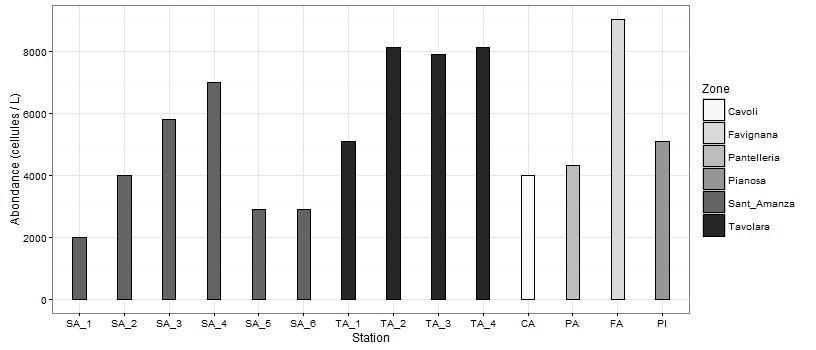
Phytoplankton abundance at stations in the MEDBIONET campaign. SA (Santa Manza) -TA (Tavolara) - CA (Cavoli), PA (Pantalleria) - FA ( Favignana) - PI (Pianosa)
Species distribution was balanced and diversity higher on the coast than offshore, while the opposite was observed for abundance. The survey did not reveal any particular non-native species.
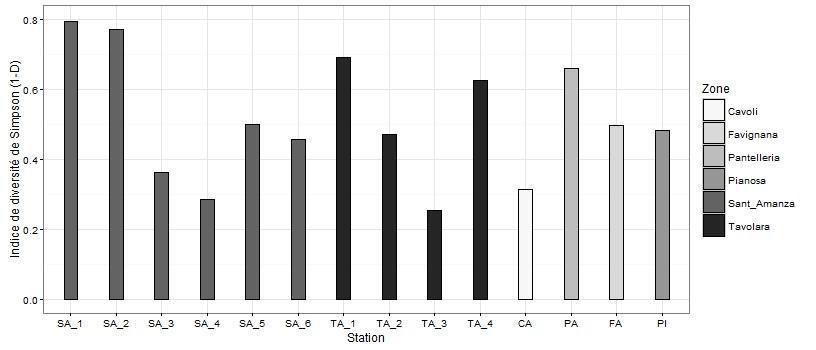
Diversity index 1 - Simpson's D of the MEDBIONET stations. SA (Santa Manza) -TA (Tavolara) - CA (Cavoli), PA (Pantalleria) - FA ( Favignana) - PI (Pianosa)
The results obtained on coastal fish populations are in line with available studies on the same habitats in the western Mediterranean. Chromis chromis was the most abundant of the 35 species observed.
The assemblage structures were different between the southern and northern areas, with the latter showing lower abundances and the absence of certain species.
Habitat type had a significant impact on abundance and diversity, with higher results in seagrass beds in good condition and rocky areas. The survey did not reveal the presence of any non-native species.
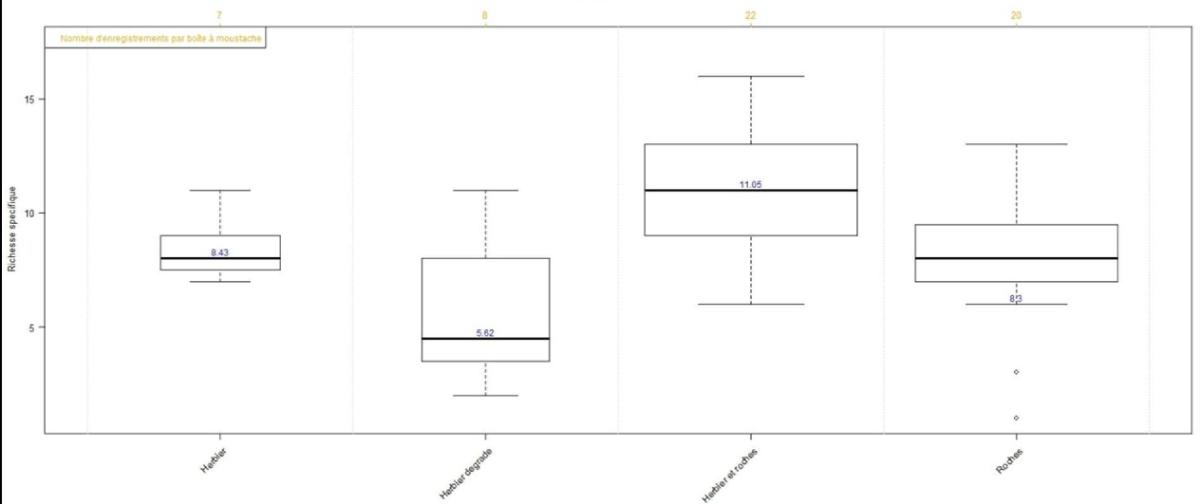
Species richness as a function of habitat type (seagrass, degraded seagrass, seagrass/rock, rock). The average species richness per habitat is shown in blue. The figures in yellow correspond to the number of stations per habitat type.
Analysis of the benthic macrofauna at the various stations located at Tavolara and Cavoli in Sardinia revealed the presence of populations associated with mudflats at the two Tavolara stations, despite the very coarse component of the sediments.
This type of sedimentary mixture (very coarse sediment and mud) is generally observed in areas subject to fluvial inputs or discharges. This hypothesis could be supported by the presence of certain species of molluscs that are associated with terrigenous mud deposits. The populations are also typical of silted coastal detritus over 35m deep.
The populations are in good ecological condition at Tavolara and in average ecological condition at Cavoli, due solely to the high abundance of the siponculid Asposiphon muelleri.

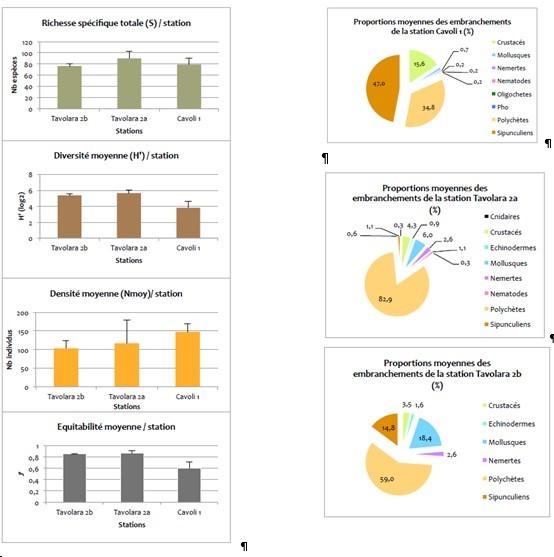
Main characteristics of the soft substrate populations observed at Cavoli and Tavolara
The pressure assessment confirms the low anthropogenic impact on these islands, with the exception of very localised areas.
Levels of metallic contamination in the water column measured using passive samplers do not show peaks corresponding to heavily contaminated sites. Only the stations located on the island of Elba near port areas indicate greater anthropogenic pressure on the island.

In sediments, the results obtained at Tavolara and Cavoli show higher levels at Tavolara, mainly on a radial located to the south-east of the island. The levels are not representative of significantly contaminated sites, but are nevertheless different from the background levels generally observed in the French Mediterranean, including Corsica, on sediments of a comparable nature.
The contaminants concerned are copper, lead, zinc, nickel and chromium in the case of metals, and PCBs and tributyltin in the case of organic contaminants. The absence of molecules such as pesticides could indicate that these results are indicative of long-standing contamination of the environment, rather than the diffuse input of contaminants from the catchment area. These results corroborate those obtained on the soft substrate biocenoses and require further investigation as the cause has not been clearly identified.
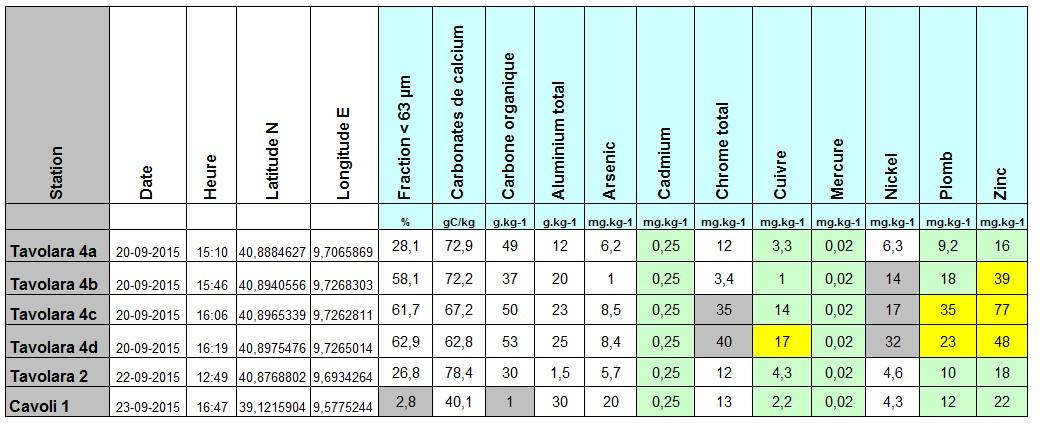
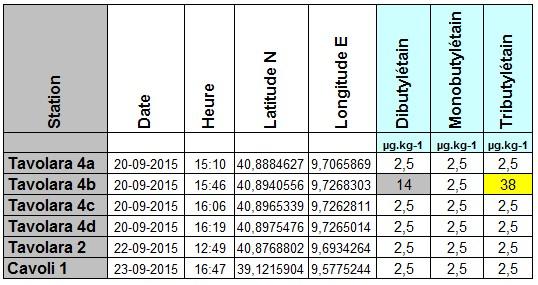
The oyster larval embryotoxicity test carried out on sediment elutriates also revealed a significant impact on the stations along this radial.
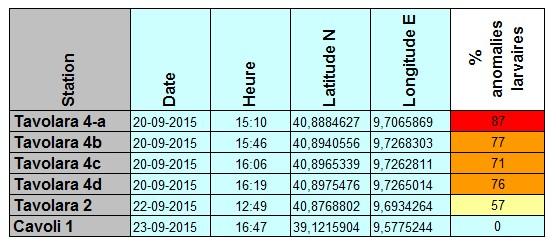
As far as the presence of microplastics is concerned, the values obtained throughout the transit are low compared with the data acquired on the French mainland. However, one station stands out with a density of over 4,000 microparticles per hectare on the east coast of Sardinia.
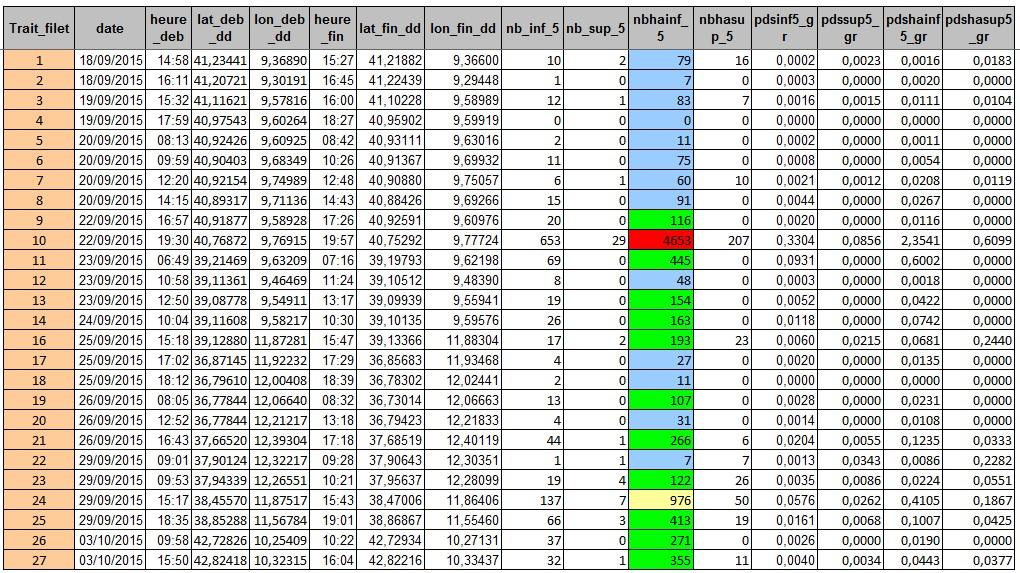
This high result could be linked to the current observed during the campaign flowing southwards along the Sardinian coast, likely to displace particles from more northerly and more anthropised areas.
Physical
MVP radials
All the MVP sections show more or less the same pattern. The seasonal thermocline is present and well established at the end of the summer, and although most of the transects were carried out near a coastline, no significant upwelling is present in the measurements. The thermocline is generally found at a depth of 20-30 metres, separating a mixed surface layer from a homogeneous bottom layer. The temperature difference between these two layers varies from 6°C in October off Nice to almost 10°C for the radial to the east of the Bouches de Bonifacio. Such a temperature gradient leads to a very stable situation and inhibits mixing between the surface layer and the bottom.
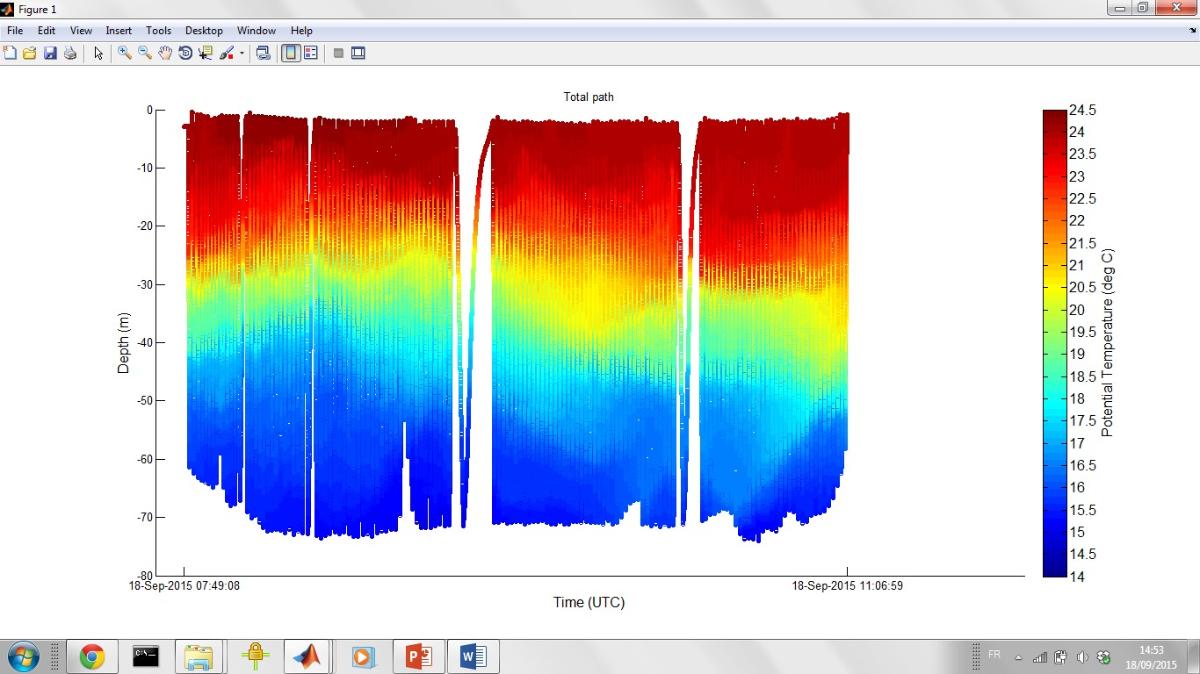
To the east of northern Sardinia, the thickness of the surface layer decreases as you move seaward and relatively saltier water rises beyond the shelf. This corresponds to a general rise in the pycnocline in the Tyrrhenian Sea. This is a consequence of the rotational wind generated by a Venturi effect between Corsica and Sardinia. A cyclonic circulation is permanently established in this zone, which often appears cold on satellite images (reduction in the thickness of the surface layer). The slope of the isopycnes (which rise towards the open sea) confirms the existence of a current flowing southwards along Sardinia at geostrophic equilibrium scales.
